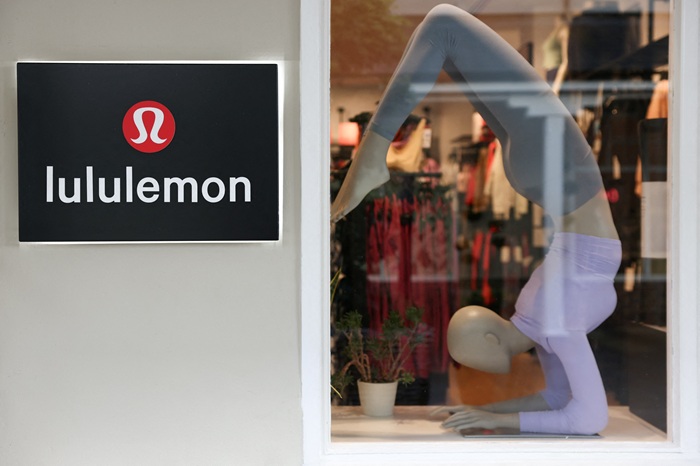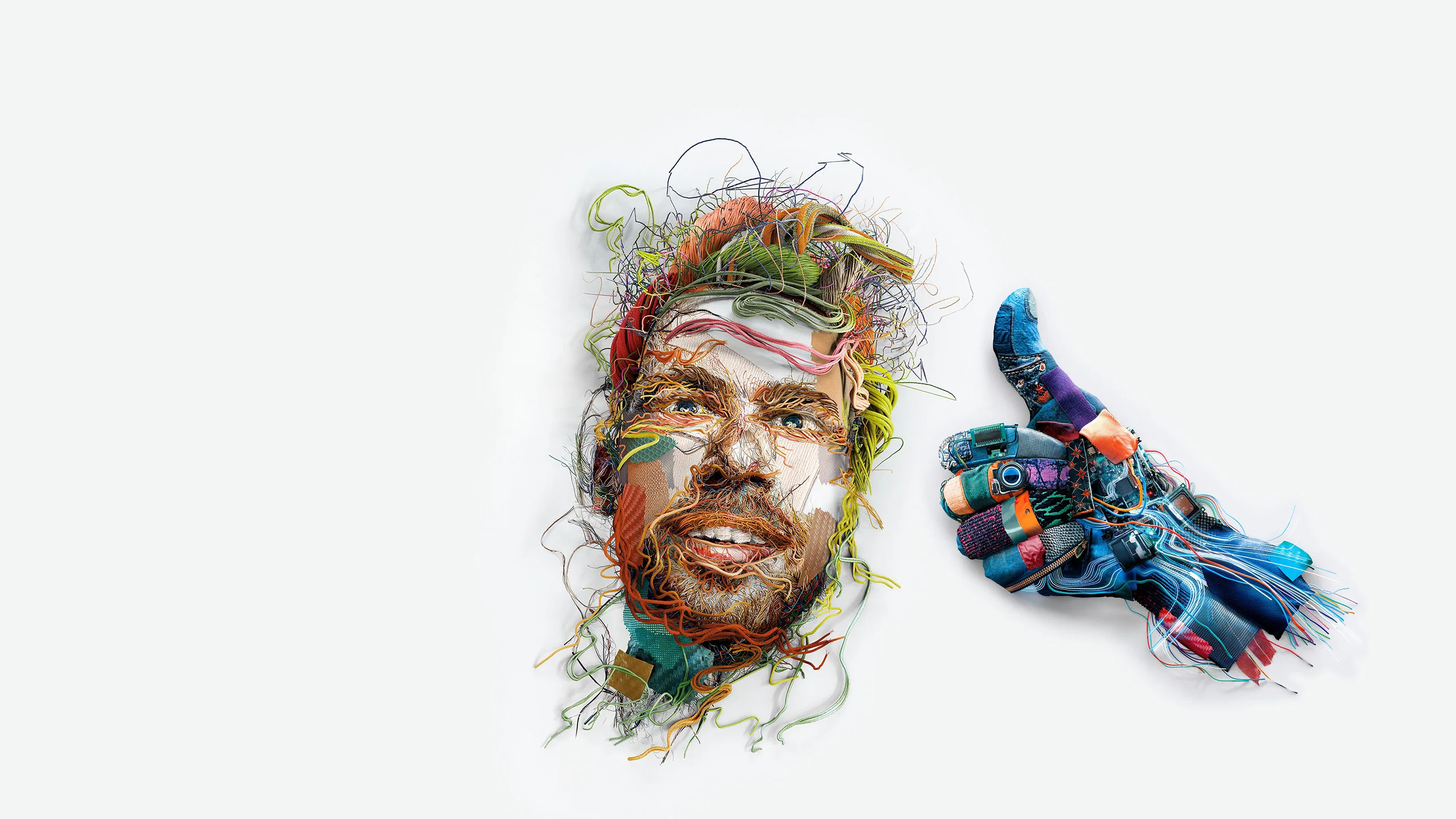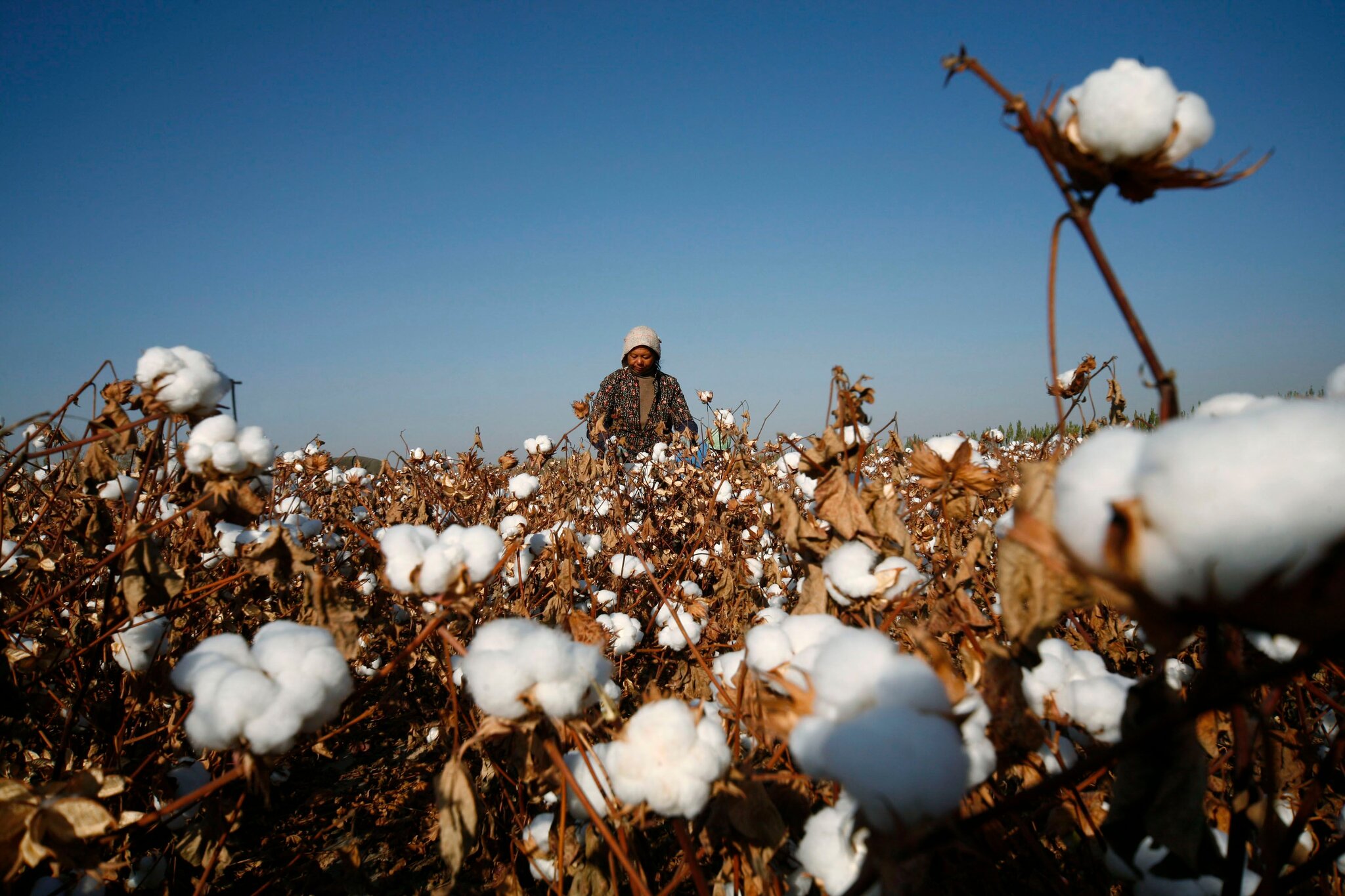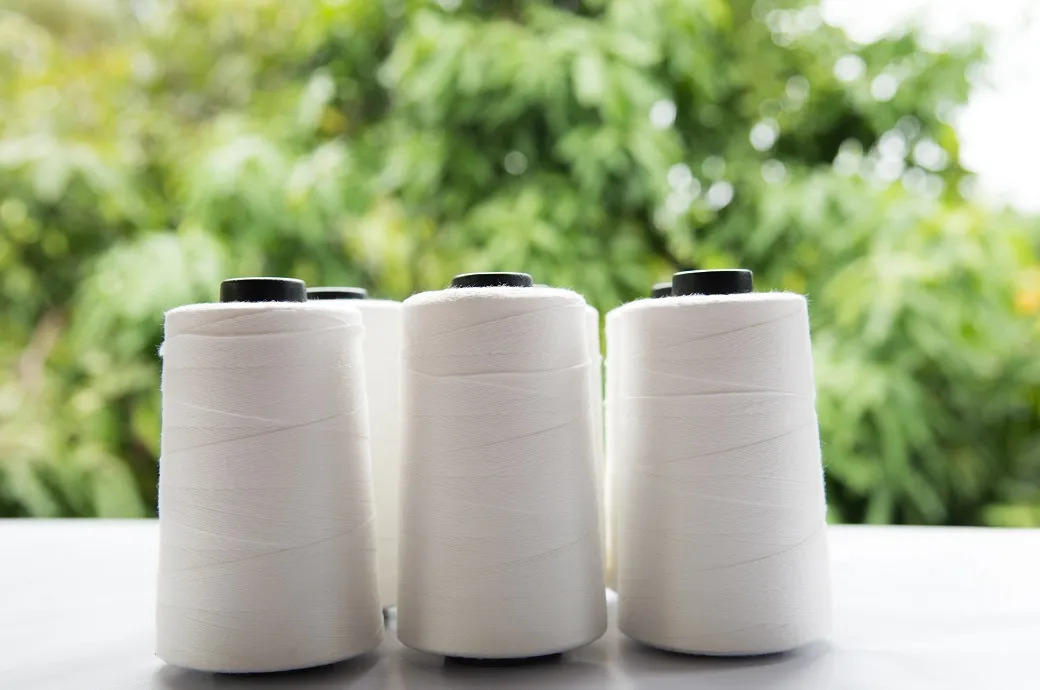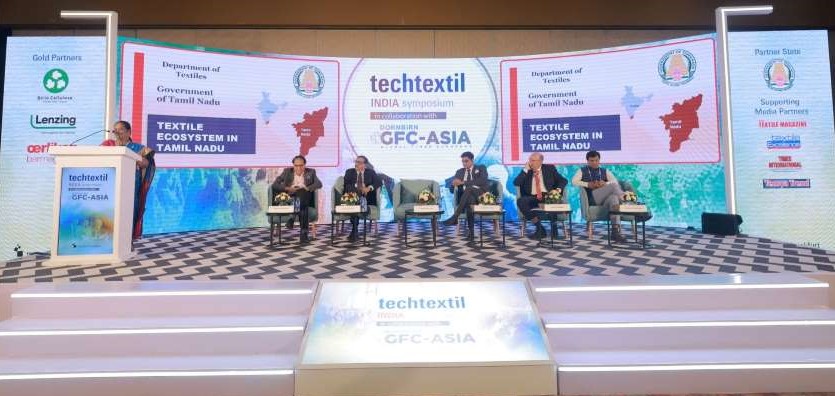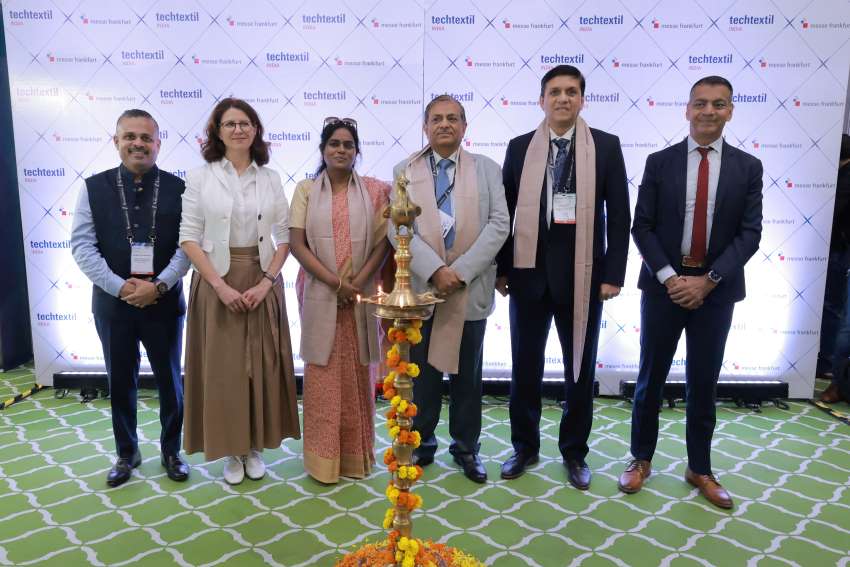FW
"The global fashion industry is up for good times in 2017 amid signs of a rebound in consumer markets in Mainland China and Hong Kong. In recent past, global giants such as Prada, Burberry and Richemont had tough times operating out of Mainland Chinese as consumers scaled back spending on luxury goods amid Beijing’s anti-corruption campaign and cooling economic growth. For some luxury brands, year 2016 was one of the most difficult as fluctuating currencies, a wave of terrorist attacks across Europe and the Brexit shock led to a new era of volatility. "

The global fashion industry is up for good times in 2017 amid signs of a rebound in consumer markets in Mainland China and Hong Kong. In recent past, global giants such as Prada, Burberry and Richemont had tough times operating out of Mainland Chinese as consumers scaled back spending on luxury goods amid Beijing’s anti-corruption campaign and cooling economic growth. For some luxury brands, year 2016 was one of the most difficult as fluctuating currencies, a wave of terrorist attacks across Europe and the Brexit shock led to a new era of volatility. “Indeed, this has been one of the toughest years ever for the global fashion industry,” analysts at McKinsey said in a recent 92-page report.
Turn of events

Luxury fashion companies were likely to see annual revenue growth of just 0.5 per cent, the report said, noting that it had surveyed responses from 400 companies. Executives interviewed by McKinsey were pinning their hopes for a turnaround in 2017. McKinsey forecast sales growth this year of 3.5 per cent, up from 2 to 2.5 per cent growth in 2016. Many of them have already undertaken significant cost-cutting and restructuring exercises, and are now primed to capture the benefits.
Richemont, known for its Piaget and IWC timepieces and Cartier diamond necklaces announced job cuts, early retirement packages, and abolishment of chief executive’s position, along with retirement of eight directors in 2016. Luxury goods sales to Chinese shoppers, who make up roughly a third of global consumption, will shrink for the first time in modern history in 2016, predicts Bain. They estimated luxury goods sales in Hong Kong fell 15 per cent for the full year 2016. The drop can be partly explained by Hong Kong’s US-dollar linked currency, which appreciated in line with the US dollar’s 6.6 per cent gain against the yuan.
Hermès, traditionally among most resilient companies, said in September it would abandon its 8 per cent annual sales growth target for 2016, while German upmarket brand Hugo Boss AG in December said its 2016 operating profit would likely drop 17 to 23 per cent. Selected currency movements are affecting consumption in 2016. Brexit, the US presidential election and European terrorism all impacted consumer confidence and touristic flows, according to Bain.
Following years of retail expansion across China, top labels such as Gucci and Louis Vuitton closed some boutiques in smaller inland cities in 2016, in a bid to trim back their retail network and restore scarcity value.
A shift in focus
Brands are now focusing more on entry-level products. Richemont’s Piaget recently launched a lower priced sports line to tap into shifting spending habits, while Prada has been focusing on HK$1,000 to HK$2,000 bags. Discounts will become more prevalent in China going forward thanks to the growth in outlet malls, McKinsey said. Macquarie analyst Daniele Gianera believes luxury brands that innovate are more likely to win market share in the long run. Once customers have bought your signature line items, they want something new. Many consumers are redirecting their spending towards experiential luxuries, such as travel, entertainment, fine dining and fine art. The trend visible among US consumers for the past half decade is becoming increasingly common in China, Gianera said.
World cotton production in 2016-17 is likely to rise by eight per cent and world consumption is likely to remain stable, which may put pressure on prices in the latter half of the season. World ending stocks may fall by seven per cent in 2016-17, though stocks outside of China are expected to grow by six per cent. The current season began with lower stocks, particularly from countries in the southern hemisphere, which saw ending stocks in 2015-16 fall by 21 per cent, the lowest since 2009-10.
The shortage in supply carried through the first few months of the 2016-17 season thereby keeping prices firm. India’s cotton production is expected to increase by four per cent, making it the world’s largest producer. Polyester prices have shown an uptrend, but still well below international cotton prices, making it unlikely that cotton mill use will expand unless polyester prices continue to rise. Gujarat is one of the key producers of cotton in India.
Mill use of cotton in India is projected to decline by one per cent. Traders cited reduced arrivals and cash shortage in banks as the reason for the rally in cotton prices, whereas most believe that the rally may not continue longer on good production.
The weaving sector, particularly ones that supply goods to exporters for being shipped abroad, are almost on the verge of collapse due to government’s policies. In other words, all trading activities have come to a halt and now all weavers are at the mercy of exporters to get yarn from them. In addition to this, the financially weak exporters who were relying on traders and indirect exporters to provide them fabric are going out of business.
Addressing an extraordinary general meeting of the Pakistan Weaving Mills Association (PWMA) Asif Siddiq, a founding member said that exporters have been allowed to import yarn without duty or income tax and sales tax. On the other hand indirect exporters have to pay a 15 per cent customs duty and one per cent income tax on import of yarn, he added.
Due to shortage of cotton in Pakistan and high input cost, the weaving industry is relying mostly on imported yarn from India, China, Indonesia and Turkey. With this kind of policy, the government has taken the indirect exporters out of the market, he added.
The government needs to deal with direct and indirect exporters in an even-handed way and consult all stakeholders before making policies. Siddiq hoped that the textile package about to be announced by the government should address this issue. At the same time, he demanded, the government should immediately release sales tax refunds so that the textile sector can come out of its financial crisis, which he attributed to delays in the payment of refunds.
Cheaper yarn from Vietnam has emerged as a threat to Pakistan’s spinning industry. Vietnam's yarn industry had grown threefold in the last four years while its yarn exports are growing by 40 per cent a year. Industrialists in many countries are relocating their units to Vietnam while China continues to invest heavily in the textile sector of that country, which is expanding their capacity at a fast pace.
Pakistan has already lost a big share in the international clothing market to rivals such as Bangladesh. The country’s textile exports have continued to fall since 2009-10 with added momentum in the last three years.
The export sector in Pakistan has demanded refunds should be paid to lure international buyers who have decided to do business with Bangladesh, China and other rivals. Exporters say it’s just the GSP plus status that has helped Pakistan to remain in the international market. Otherwise the country’s products would have been nowhere. The Generalised Scheme of Preferences-Plus provides zero-duty market access to Pakistan’s products, including textile and clothing, into the European Union.
Pakistan’s textile exports declined by 0.5 per cent in November 2016. Exports of basic textiles fell by 1.9 per cent year on year during the first five months of the current fiscal.
Nordics live is in the forefront of sustainability and now ‘Velour by Nostalgi’ has the label to prove it. The Swedish menswear brand received a Nordic Ecolabel license for its Svanen jeans. This means that the particular jeans meets 99 per cent of the demands of Nordic Ecolabel.
Launched in 1989, the Nordic Swan Ecolabel serves as the official Nordic Ecolabel given out by the Swedish government through a non-profit and state-owned organization called Ecolabelling Sweden. The label strives to help consumers shop with the environment in mind and bolster sustainability.
Benefits of the denim include no dangerous chemicals, toxins, endocrine disruptors, or heavy metals, better working environments for factory workers, less production pollution, and better fabric. Velour by Nostalgi debuted in producing sustainable denim in August 2016. Per Andersson, Founder of Velour by Nostalgi said his company wants to offer and help end consumers make better and more sustainable choices. The Svanen Ecolabled jeans come in five washes and two silhouettes, a loose 90s fit and a regular fit. They will be available online starting from February 13.
In its newly published report, Transparency Market Research has studied the global socks market in detail. The report titled ‘Socks Market - Global Industry Analysis, Size, Share, Growth, Trends and Forecast 2015 - 2023,’ states the socks market is expected to progress from $5.6 bn in 2014 to $11.6 bn by 2023.
The global socks market is expected to exhibit an 8.50 per cent CAGR from 2015 and 2021. Considerable growth in the retail sector, constantly growing men’s apparel industry and improving fashion trends are responsible for the growth of global socks market.
Socks, one of the common consumer goods, are available in global market in many materials and varieties. In recent years, due to the introduction of luxury socks, they have been considered more as fashion products than common consumer goods. Even though socks account for a smaller share in the global apparel market, their demand is expected to increase considerably in the years to come.
The rising boom in global socks market has allowed new companies to introduce their products. Increasing per capita income in various countries has enabled the global socks market to become the fastest growing market in the global apparel market.
The Transparency Market Research report divides the global socks market on the basis of region, gender, product, and material used. On the basis of product, the global socks market is classified into specialty socks, athletic socks, trouser socks, casual socks, women’s socks, and others. The demand for athletic socks is expected to be the highest in the global market due to the increasing demand for athletic shoes. Going forward, the increasing pool of consumers participating in sports is expected to boost the athletic socks segment.
Last December, PVH Corp along with its Tommy Hilfiger brand signed with the UN Global Compact, a massive initiative aimed at harnessing business’s role in global sustainability. The UN Global Compact is a platform for the development, implementation and disclosure of responsible corporate practices.
The initiative has enlisted more than 9,000 corporate members 3,000 non-business signatories based in 160 countries around the world to lead change on the global sustainable development agenda by aligning their operations and strategies with 10 universally accepted principles in the areas of human rights, labour, environment and anti-corruption.
Last year, PVH marked the 25th anniversary of its code of conduct for business partners. Titled ‘A Shared Responsibility’ the code of conduct helped the outfit pioneer new practices in social compliance when it first launched in 1991.
The company recently launched an enhanced global corporate responsibility strategy focused on empowering people, preserving the environment and supporting communities. PVH’s strategies supports many of UN’s 17 Sustainable Development Goals such as building safety, chemical management, greenhouse gases, inclusion and diversity, and supporting the needs of women and children. PVH and Tommy Hilfiger are also working with the UN’s CEO Water Mandate, which is committed to safeguard and preserve water resources.
Founded in 1881, Phillips-Van Heusen Corp.(PVH), owns brands like Tommy Hilfiger, Calvin Klein, Van Heusen, Izod, Arrow, Warner’s and Olga. The company also holds the license for Speedo brand.
Making a fresh start in the beginning of the new year, Oeko-Tex has reviewed the requirements of its products and published its new regulations. A large number of new changes will be made to Made In Green, MySTeP, STeP, and Standard 100. Oeko-Tex are independent textile testing institutes working for enhanced product safety and sustainable production in the textile value chain.
The Oeko-Tex Association has established a new price strategy for the Made in Green by Oeko-Tex product label to fully satisfy market requirements. The new pricing offers label issuers the option to use smaller packets of labels, or even a single label for their product to be labelled with Made In Green by Oeko-Tex.
After having been for three years in the market, Oeko-Tex has revised the STeP by Oeko-Tex limit value tables in Annex G1 and G2 of the standard document. These revisions were influenced by ongoing changes in the global environment, input from customers and current regulatory developments. A new chapter has been added in Annex D: “Hazardous Processes That Should Be Avoided”. These processes that are to be avoided include the use of potentially hazardous surfactants, sodium hypochlorite (as a bleaching agent) and defoamers that are potentially damaging to the environment.
The new regulations for Standard 100 by Oeko-Tex will come into force on April 1 following a three-month transition period. At the parameter ‘per- and polyfluorinated compounds’, a large number of substances have been added or listed explicitly by name in product class I (items for babies and small children) and provided with limit values. As a result, in product class I, the use of per- and poly fluorinated compounds is severely restricted and nearly eliminated. A large number of substances are also included in the list of regulated softeners (phthalates) in all of the product classes. The three organic tin compounds dipropyltin (DPT), monophenyltin (MPhT) and tetraethyltin (TeET) are now regulated with limit values in all product classes. In addition, the use of the blue colourant Navy Blue is also now explicitly prohibited for product certification according to Standard 100 by Oeko-Tex.
Odisha launched the Odisha Apparel Policy recently. Reacting to it, deputy general manager of Odisha Spinning Mills Federation Narayana Sahu said this is the first exclusive policy for apparels by any state and is a positive gesture for industrialists from Tirupur and other clusters to choose Odisha as destination for setting up manufacturing facilities.
Welcoming entrepreneurs to his state, he said that those who wished to make investments in Odisha would be extended a slew of incentives both for setting up standalone apparel production units and opening up units inside apparel parks coming up in Odisha. Incidentally, the government of Odisha is planning to make two apparel parks under the Apparel Policy near Bhubaneswar.
Sahu stated every individual standalone unit would be given an incentive of Rs 1,500 per worker every month for a period of 36 months provided they employ a minimum of 200 workers. Besides this, interest subsidies could also be availed by such units. For the units coming up in the apparel parks, capital grants to the tune of 20 per cent of the project cost would be given, he declared.
The Air Freight rebate scheme for textile and apparel known as the 'Speed-to-Market' Scheme (STMS) as announced in Budget 2016-17 will be launched this month after consultations with the various stakeholders. STMS aims at developing the 'Speed-to-Market' textile and apparel export segment in the wake of Brexit. It will also allow Mauritian textile and apparel exporters to become more competitive vis-à-vis other countries exporting via air freight to Europe.
Another objective will be to enhance the competitiveness of Mauritian exports in the European market especially in terms of speed of delivery while at the same provide support to the textile and apparel enterprises facing difficulties in the wake of Brexit.
The STMS which will be applicable to the textile and apparel manufacturing companies only, will among others; provide a 40 per cent refund on air freight cost to exporters to Europe including UK; be time-bound for 2 years; and will be operated and managed by Enterprise Mauritius. The refund will be applicable for exports as from April 1, 2017.


